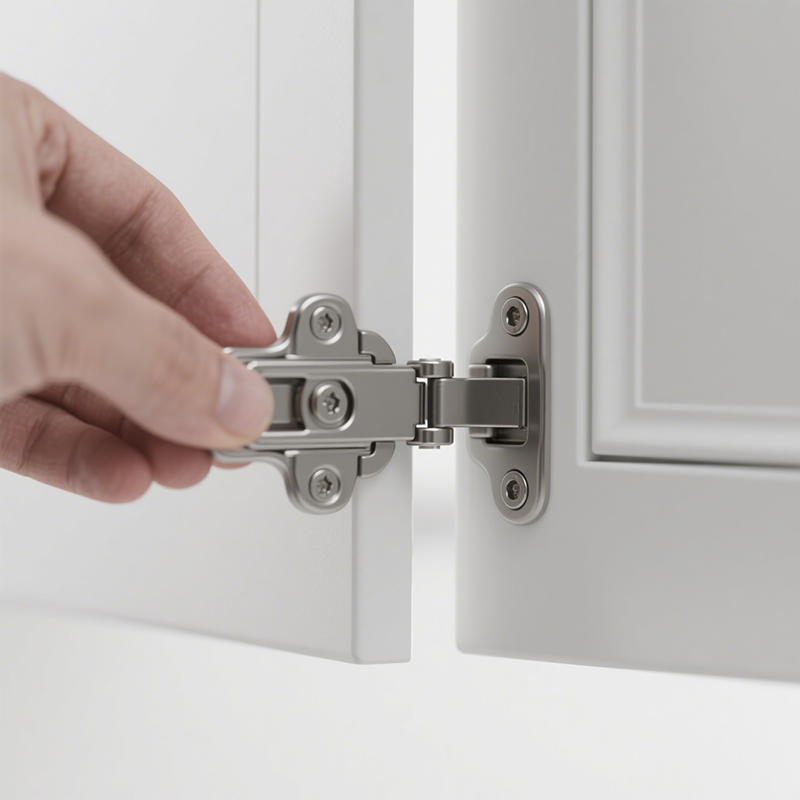Differences Between Full-Overlay, Half-Overlay, and Inset Hinges

Full-overlay, half-overlay, and inset hinges are distinguished primarily by how they accommodate the cabinet door’s position relative to the cabinet frame, affecting both functionality and aesthetics.
Full-overlay hinges
These are designed for doors that fully cover the cabinet’s side panel when closed, leaving only a tiny gap. The hinge arm is longer to support the door’s overhang, making it ideal for single- door cabinets or standalone units where a seamless, clean look is desired (e.g., kitchen cabinets, wardrobes).
Half-overlay hinges
Used for doors that cover only half of the cabinet’s shared side panel. This is common in double-door cabinets, where two doors meet at a central panel—each door overlaps half the panel, creating a symmetrical gap between them. The hinge arm is shorter than full-overlay types to balance the partial coverage.
Inset hinges
These work with doors that fit inside the cabinet frame, sitting flush with the cabinet’s front edge when closed. The hinge is compact and often concealed, as the door does not overhang. Inset hinges are favored for traditional or minimalist designs (e.g., vintage bookcases, solid wood cabinets) for a neat, integrated appearance.
In short, the choice depends on whether the door overlays fully, partially, or sits inside the cabinet frame.
